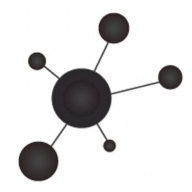

Icinga and LogicMonitor are competing network monitoring solutions. LogicMonitor has the upper hand with its comprehensive feature set despite a higher price point.
Features: Icinga offers extensive flexibility and integration possibilities, catering to businesses needing tailored solutions. It provides a customizable framework and supports various monitoring protocols. LogicMonitor delivers advanced monitoring capabilities, out-of-the-box functionality, and predictive analytics, supporting enterprises desiring robust, ready-to-use features.
Room for Improvement: Icinga could enhance its ease of use, user interface design, and community support resources. LogicMonitor might improve by offering more competitive pricing, reducing complexity in configurations, and providing more flexible deployment options.
Ease of Deployment and Customer Service: Icinga supports a scalable on-premise deployment model, ideal for organizations with specific customization needs but relies on community support. LogicMonitor offers cloud-based deployment for quick installations and superior support options, simplifying the deployment and maintenance process.
Pricing and ROI: Icinga's open-source nature implies a lower initial cost, ideal for organizations with development resources. However, there can be additional costs for custom development and maintenance. LogicMonitor, while more expensive, offers enhanced ROI due to its comprehensive feature set and efficient monitoring capabilities, which can justify the investment for enterprises requiring extensive functionality.
| Product | Market Share (%) |
|---|---|
| LogicMonitor | 2.2% |
| Icinga | 3.8% |
| Other | 94.0% |


| Company Size | Count |
|---|---|
| Small Business | 9 |
| Midsize Enterprise | 4 |
| Large Enterprise | 7 |
| Company Size | Count |
|---|---|
| Small Business | 10 |
| Midsize Enterprise | 9 |
| Large Enterprise | 8 |
Icinga is a robust tool for monitoring IT infrastructure, known for its distributed monitoring capabilities and seamless integration with multiple platforms. It efficiently observes servers, network devices, and environments like Linux and Windows, enabling proactive issue identification and resource management.
With a focus on task delegation and clustering, Icinga offers an intuitive interface through its GUI and Icinga Director, simplifying configuration. The extensive plugin library supports diverse technologies, while the API allows automation with tools like Terraform and Ansible. Despite its strengths, users report challenges with data display in the GUI, a need for improved dashboards, and complex configuration processes. Users benefit from its SNMP alerts, email notifications, and automated incident handling, making it essential for managed service environments and enterprises.
What are the key features of Icinga?Icinga is widely adopted in IT environments for monitoring servers, networks, and applications across industries such as finance, healthcare, and technology. Its ability to integrate with various operating systems and automation platforms makes it a versatile choice for industries prioritizing comprehensive surveillance and proactive management of their infrastructure.
LogicMonitor provides infrastructure and network monitoring, alerting, and reporting across environments like AWS, Azure, and on-premises.
LogicMonitor aids businesses and managed service providers in maintaining system health, performance, and availability. It supports various technologies including Citrix, Cisco Voice systems, operating systems, virtual machines, and network devices. Businesses benefit from dashboards and data insights for proactive management, customizable data sources, and integration with third-party applications like Slack or ServiceNow. AI technology enhances monitoring capabilities by recognizing normal behavior and updating monitored elements, while multiple monitoring features consolidate data sources into one interface.
What are LogicMonitor's key features?
What benefits or ROI should users expect?
LogicMonitor is utilized across diverse industries by managed service providers to ensure seamless monitoring and management of clients' systems. This includes application performance monitoring, manual topology mapping, SLA calculations, and improvement of role-based permissions. Companies also seek enhanced resources view, better collector upgrade processes, and streamlined customization for monitoring from the repository.
We monitor all IT Infrastructure Monitoring reviews to prevent fraudulent reviews and keep review quality high. We do not post reviews by company employees or direct competitors. We validate each review for authenticity via cross-reference with LinkedIn, and personal follow-up with the reviewer when necessary.